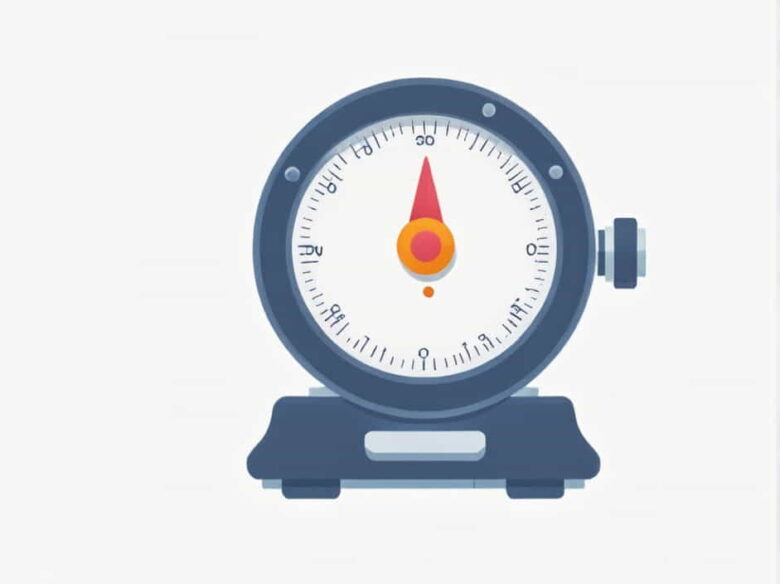In Class 12 Physics, the galvanometer is an essential instrument used to detect and measure small electric currents. One of the key concepts related to the working of a galvanometer is its Figure of Merit (K). This parameter determines the sensitivity of the galvanometer and plays a crucial role in converting it into an ammeter or voltmeter.
This content provides a detailed explanation of the Figure of Merit, its formula, significance, experimental procedure, and related concepts. Understanding this topic is vital for students preparing for physics practical exams and competitive exams.
1. What Is a Galvanometer?
A galvanometer is a highly sensitive instrument used to detect and measure small electric currents. It operates based on the torque acting on a current-carrying coil in a magnetic field, producing a deflection proportional to the current passing through it.
Types of Galvanometers
- Moving Coil Galvanometer (MCG) Used in laboratory experiments.
- Ballistic Galvanometer Measures charge rather than current.
In practical applications, the galvanometer can be converted into an ammeter (to measure current) or a voltmeter (to measure voltage). To perform this conversion accurately, it is essential to determine the Figure of Merit (K) of the galvanometer.
2. What Is the Figure of Merit of a Galvanometer?
The Figure of Merit (K) of a galvanometer is defined as the current required to produce a unit deflection in the galvanometer scale. It is represented by the symbol K and is expressed in ampere per division (A/div).
Formula for Figure of Merit
Where:
- K = Figure of Merit (A/div)
- I = Current flowing through the galvanometer (A)
- theta = Deflection in the galvanometer scale (divisions)
This equation indicates that a smaller value of K means a more sensitive galvanometer, as less current is needed for each unit deflection.
3. Significance of Figure of Merit
The Figure of Merit of a galvanometer is important for several reasons:
- Determining Sensitivity A lower K means the galvanometer is more sensitive to small currents.
- Converting to Ammeter or Voltmeter To use a galvanometer as an ammeter or voltmeter, knowing K helps in selecting the appropriate shunt resistance (for ammeters) or series resistance (for voltmeters).
- Ensuring Accurate Measurements The value of K helps in precise calibration of the instrument.
A high-sensitivity galvanometer is preferable when measuring very small currents, while a low-sensitivity galvanometer is useful when handling larger currents.
4. Experimental Determination of Figure of Merit
In the Class 12 Physics practical syllabus, students perform an experiment to determine the Figure of Merit (K) of a given galvanometer.
Apparatus Required
- Moving coil galvanometer
- Battery or power supply
- Variable resistor (rheostat)
- Ammeter
- Connecting wires
- One-way key (switch)
Circuit Diagram
A simple circuit consisting of a battery, ammeter, rheostat, and galvanometer is used for this experiment. The ammeter measures the total current (I) passing through the circuit, while the galvanometer records the deflection (?).
Procedure
- Connect the circuit as per the circuit diagram.
- Adjust the rheostat to control the current passing through the galvanometer.
- Record the galvanometer deflection (?) in scale divisions for a known current (I) from the ammeter.
- Repeat the procedure for different values of I and corresponding deflections ?.
- Calculate K using the formula K = frac{I}{theta} .
- Take the average of multiple readings to get an accurate value of K.
5. Factors Affecting the Figure of Merit
Several factors influence the Figure of Merit (K) of a galvanometer:
- Coil Resistance A higher resistance increases K, making the galvanometer less sensitive.
- Magnetic Field Strength A stronger field decreases K, increasing sensitivity.
- Spring Constant If the restoring torque of the spring is high, K will also be higher, reducing sensitivity.
- Quality of Pivot and Bearings Friction in moving parts can affect K.
6. Applications of Figure of Merit
The concept of the Figure of Merit is widely applied in electrical measurements:
A. Conversion of Galvanometer into Ammeter
- To measure large currents, a shunt resistor is connected in parallel with the galvanometer.
- The value of the shunt resistance depends on K and the desired range of the ammeter.
B. Conversion of Galvanometer into Voltmeter
- To measure voltage, a high resistance is connected in series with the galvanometer.
- The required series resistance depends on K and the desired voltage range.
C. Measuring Small Currents in Electrical Circuits
- The galvanometer, with a known Figure of Merit, helps in precisely detecting small currents in sensitive circuits.
7. Solved Example
Problem Statement
A galvanometer shows a deflection of 25 divisions when a current of 0.5 mA (0.0005 A) flows through it. Determine the Figure of Merit (K).
Solution
Using the formula:
Final Answer:
The Figure of Merit of the given galvanometer is ** $2 times 10^{-5}$ A per division**.
This value indicates that each division on the galvanometer scale corresponds to a current of $20$ microamperes ( mu A ).
8.
The Figure of Merit (K) of a galvanometer is a crucial parameter that determines its sensitivity and application in measuring small currents. It is defined as the current required to produce a unit deflection and is calculated using the formula ** K = frac{I}{theta} **.
In physics experiments, determining K helps in:
- Understanding the sensitivity of the galvanometer.
- Converting the galvanometer into an ammeter or voltmeter.
- Ensuring accurate electrical measurements in circuits.
By performing the Figure of Merit experiment, students gain hands-on experience with precision measurement techniques, which are essential in electrical and electronic applications.



